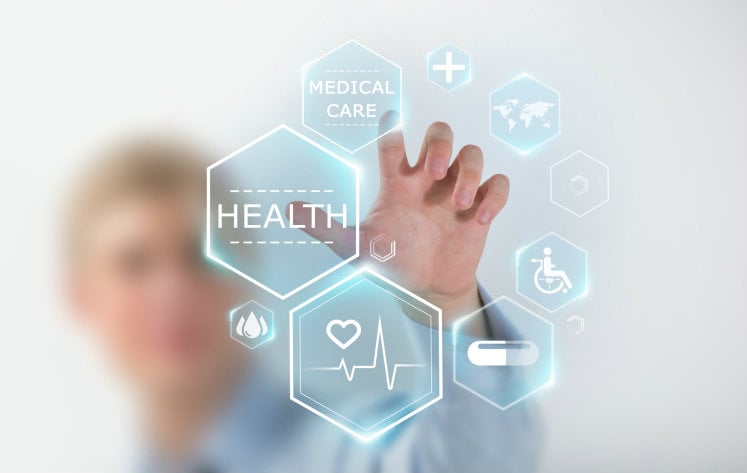Ideal Healthcare RCM Practices to Boost Functional Effectiveness and Collections
Ideal Healthcare RCM Practices to Boost Functional Effectiveness and Collections
Blog Article
A Comprehensive Overview on How Healthcare RCM Works to Simplify Invoicing and Collections
Navigating the intricacies of medical care profits cycle management (RCM) is important for providers intending to improve their billing and collections procedures. The guide unpacks the ins and outs of RCM, from individual enrollment to accounts receivable management, supplying insights right into optimizing each step. Integrating advanced modern technology and standard procedures can dramatically minimize case denials and increase settlement cycles. Yet, real obstacle hinges on flawlessly merging these components to increase capital. As we check out the core parts and techniques that drive performance, one question stays: just how can healthcare entities finest position themselves to flourish monetarily in an ever-evolving sector?
Comprehending Revenue Cycle Monitoring
RCM is an essential management function that encompasses the entire economic process of patient treatment, from the initial appointment establishing to the final settlement of the equilibrium. It is an intricate procedure created to recognize, gather, and handle the revenue from the services provided to individuals.
The RCM process starts when a patient routines an appointment and prolongs via the person's care trip, consisting of billing and collections. A vital goal is to decrease the time between obtaining and offering a service settlement, thus boosting the company's economic wellness. RCM includes various functions such as individual enrollment, insurance verification, cost capture, coding, declares submission, settlement posting, and handling allures and denials.
Secret Elements of RCM
In the realm of Earnings Cycle Monitoring (RCM), understanding its key components is fundamental to accomplishing financial effectiveness within healthcare companies. RCM is a thorough process that includes various phases, each essential to making sure reliable billing and collections. The primary parts consist of individual registration, insurance confirmation, fee capture, coding, claim submission, settlement uploading, and balance due monitoring.


As soon as coded, insurance claims are sent to payers, where precision is extremely important to prevent delays or denials - Healthcare RCM. Repayment publishing entails tape-recording the received settlements, which permits the settlement of accounts. Finally, balance dues administration concentrates on tracking and resolving overdue cases, making sure timely follow-up and resolution
Each component of RCM is interconnected, and ineffectiveness in any kind of component can interfere with the entire cycle. Consequently, understanding these aspects is crucial for medical care companies to enhance income and improve their financial wellness.
Methods for Effective Payment

Standardizing payment treatments across the company is another key technique. Establishing clear standards for documents, coding, and entry helps preserve uniformity and conformity with regulatory demands. Training personnel consistently on these treatments makes sure everybody is up-to-date with the current adjustments in payment codes and payer plans.
Exact cost capture is crucial in preventing revenue leakage. Applying routine audits and tracking systems enables the recognition and correction of discrepancies before they affect earnings. Additionally, keeping open lines of interaction with payers helps to swiftly solve any type of click for more disputes or misunderstandings that may develop.

Lastly, engaging clients early in the payment procedure by supplying clear read the full info here price quotes and educational materials about their economic duties can dramatically reduce confusion and improve settlement timeliness. These methods jointly contribute to a more economically healthy and efficient payment system.
Enhancing Collections Procedures
A robust collections process is essential for preserving monetary security within health care organizations. Given the intricacies of medical invoicing and the variety of payer demands, enhancing the collections procedure involves implementing critical measures that make certain accurate and prompt settlement of services provided. Central to this is using modern technology to automate and enhance procedures, decreasing hand-operated errors and boosting effectiveness. Automation tools can aid in tracking case conditions, sending out prompt reminders to patients, and handling rejections better.
Clear and clear person interactions are important. Supplying detailed descriptions of fees and providing flexible payment plans can enhance individual complete satisfaction and prompt payments.
Normal audits of the collections process must be carried out to determine locations for renovation and make certain conformity with policies. By analyzing information, healthcare companies can identify patterns, anticipate prospective concerns, and adapt techniques accordingly (Healthcare RCM). Eventually, a well-enhanced collections procedure not just sustains financial health but additionally adds to an extra seamless experience for clients and team alike
Optimizing Income Streams
Structure upon the structure of a strong collections procedure, health care companies can further boost their economic security by purposefully optimizing profits streams. This entails a multi-faceted approach, beginning with a comprehensive analysis of existing profits resources to identify inadequacies and locations for growth. Using advanced information analytics tools makes it possible for companies to gain understandings right into payer mix, individual demographics, and service utilization patterns, permitting for data-driven decisions that improve profits capture.
Carrying out automated billing systems can considerably decrease errors and accelerate cases processing, guaranteeing that earnings is collected much more effectively. Furthermore, enhancing payer agreements with routine arrangements can improve repayment prices and terms, directly affecting the bottom line. Expanding solution offerings, such as incorporating telehealth or health care, can likewise draw in a broader patient base, hence raising revenue capacity.
One basics more essential element is enhancing person engagement and contentment, as satisfied clients are a lot more most likely to stick to treatment strategies and make prompt repayments. Offering adaptable repayment choices and transparent payment practices can improve collections and foster patient commitment. Healthcare RCM. By taking on these approaches, medical care organizations can develop a much more resilient financial structure, ensuring sustained growth and stability in an ever-changing sector landscape
Conclusion
Finally, medical care Earnings Cycle Monitoring (RCM) plays a critical duty in enhancing invoicing and collections processes by incorporating vital components such as individual enrollment, insurance coverage confirmation, fee capture, coding, claims submission, and balance due management. By using sophisticated technology, standardizing procedures, and cultivating individual involvement, healthcare providers can considerably minimize claim rejections, accelerate repayment cycles, and improve money flow. This thorough method to RCM inevitably causes boosted economic efficiency and sustainability for healthcare companies.
The RCM procedure begins when a patient timetables an appointment and extends via the individual's treatment journey, consisting of invoicing and collections.Another important element is boosting person engagement and satisfaction, as completely satisfied patients are more most likely to stick to therapy plans and make prompt repayments. Providing adaptable repayment choices and clear payment practices can boost collections and foster client loyalty.In verdict, medical care Revenue Cycle Monitoring (RCM) plays a crucial duty in optimizing payment and collections processes by integrating key elements such as individual registration, insurance policy confirmation, fee capture, coding, claims entry, and accounts receivable monitoring. By utilizing innovative technology, standardizing treatments, and fostering person involvement, healthcare carriers can considerably lower claim denials, speed up payment cycles, and enhance cash money flow.
Report this page